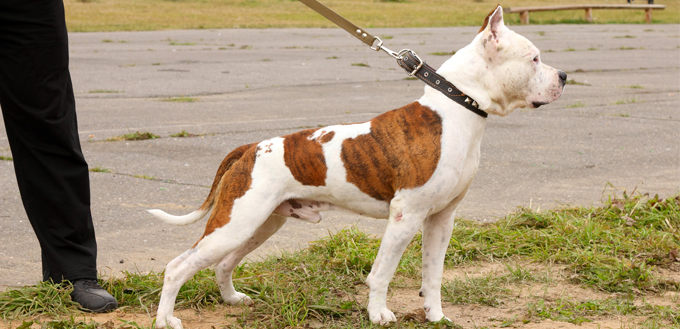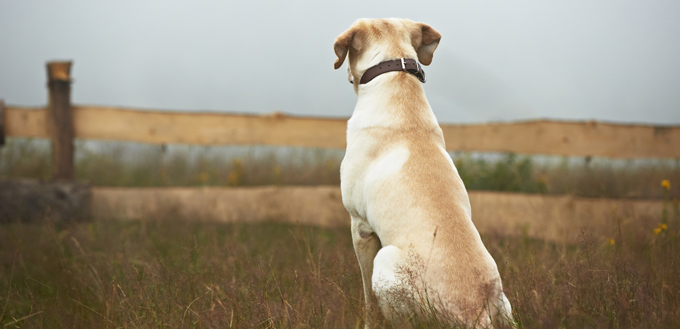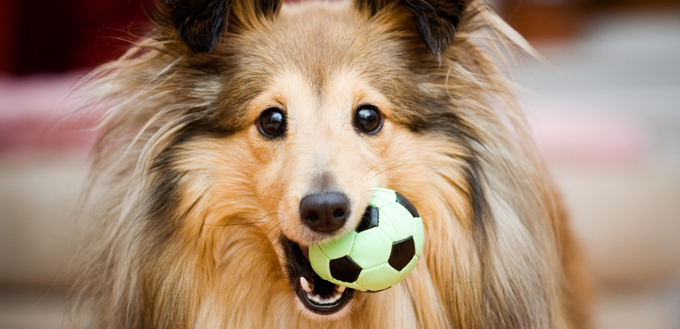Dog drives are those urges that govern the way that your pooch behaves. Some people call it nature and others call it instinct but they all mean the same thing. A few of these urges may cause problems to dog owners and result in behavior that they need to control. However, these urges are actually very useful too.
Whilst our domesticated dogs no longer have to survive in the wild, they do need their urges to allow them to learn new skills, act on their instincts and maintain all of the canine abilities that have developed over thousands of years of evolution. The genes that help your dog to stay safe and which form their distinctive personality have been passed through many generations. Your pooch may enjoy a pampered lifestyle now but they can’t shake off those biological impulses that so powerfully stimulate them to take certain actions and behave in a certain way.
As you start to train your dog to help them learn new skills and adopt behavior that is acceptable in your home, it will help a lot if you understand more about the urges that lie behind their actions. Bear in mind that it is often these drives and urges that are cause your dog to act up and that discourage them from obeying your commands. Once you understand this, you are well on your way to getting the most from your training sessions.
Here are the most important things that you need to know about the major canine drives that influence your dog’s behavior.

The Defense Drive
All animals, including humans, have a defense drive. It is triggered in response to a stimulus that is perceived as harmful. It is also called the ‘fight or flight’ response. So, when an animal comes across something that they think will harm them, they either fight it or run away from it!
Different dog breeds react in different ways. Some breeds have a strong desire to defend themselves and will stand and ‘fight’. Others take the option of ‘flight’ and run away. The ‘fight’ response manifests itself as behavior that we would often interpret as aggressive and attacking. Dogs that are willing to stand and fight have a strong defensive drive. The dogs that run away have a weaker defense drive and they are avoiding confrontation by escaping the threat to their safety. However, if these dogs are not able to run away, perhaps because they are surrounded, they may also adopt the ‘fight’ response and become aggressive.
It’s important for owners to remember that an aggressive dog may actually be a frightened dog and the best approach may be to remove the stimulus that is making them frightened.
The Sexual Drive
Have you noticed some changes in your dog’s behavior recently? It could easily be down to this powerful dog drive. Males and females respond differently to this instinct. A male dog will tend to shadow other dogs and mount and hump them. It can also manifest itself as aggressive behavior and this makes many owners very unhappy and concerned. It’s not just other dogs that male dogs can mount. They will do the same to your guest’s legs and soft toys when the sex drive is at its highest and this can lead to great embarrassment for their owners! This behavior can also be learned from observing other dogs.
When female dogs are on heat for the first time, they may try to stay away from male dogs and have been known to show aggressive behavior towards any male that dares to approach them. However, as they mature and enter into repeated reproductive cycles, they act very differently. When their hormones reach a certain level, they can become agitated and fidgety and you may see them bowing in front of a male dog.
The Drive to Find Food
The drive for dogs to eat is the strongest of all dog drives and is essential for their survival in the wild. Dogs know that in order to survive they must eat and therefore have a strong impulse to seek out food. If someone attempts to interrupt your dog whilst they are eating this drive may cause them to become extremely aggressive. The genetic instinct to protect their meal is very strong!
There are downsides to this dog drive. It can lead to overeating as your dog will eat whether they are hungry or not. In the wild, they did not know where the next meal was coming from. If some food was there, they would eat it. A domestic dog does not have this problem and food is in plentiful supply. Unfortunately, this can result in overeating and obesity which can lead to a range of weight-related health problems including diabetes and heart disease. You need to help your dog to control this urge. Consult your vet to find out the exact number of calories that your dog needs every day based on their sex, breed, age, size, and levels of physical activity. Then carefully measure out their meals to match that calorie requirement. Keep a close eye on treats and scraps from the table. It may help if you take steps to discourage your dog from begging for extra food.
This drive may seem so strong that there is no way of overcoming this problem, however, the good news is that you can use it to your advantage. With the use of small food treats you can quickly train your dog to obey your commands as they will do practically anything to get their paws on a treat! Head over to our review of the best dog treats.
The Retrieve Drive
The drive to chase and then bring something back to you is clear in many breeds. This instinct is a true reflection of your dog’s history as a hunter in the wild. Many breeds of dogs seem to love the idea of chasing after items and bringing them back to you. It is also true that some breeds have an especially strong retrieve drive and these are the traditional hunting dogs. If you have a breed such as a Labrador or a Golden Retriever you will know all about this.
This drive will result in your pet chasing anything that you throw, whether you wanted it brought back to you or not! If you don’t take steps to curb this drive when they are a pup, it can get out of control and become a real nuisance but it can be used to your advantage. It is a great way for your dog to get some exercise without you having to run around as well. All you have to do is throw an object such as a ball or a Frisbee repeatedly and your Lab will love you forever.
Related Post: Best Frisbee for Dogs

The Guarding Drive
This drive of guarding is another dominant dog urge. You may have noticed how strong it is in breeds such as Rottweilers, German Shepherds, and other breeds that are typically used as guard dogs. Humans have learned to use this urge to their advantage and use certain breeds to patrol property and to provide personal protection. There are other breeds such as the Golden Retriever and the Labrador where this urge is not very strong at all.
The drive to guard urges the dog to protect and defend anything or anyone that they are fond of. If your dog is demonstrating this drive, however, it may not be as useful as you think it’s going to be! Whilst it’s true that your dog can guard your house and deter burglars, the downside is that they will also show aggressive behavior towards anyone who attempts to touch or take their favored items. This barking and growling can escalate into attacks when your dog’s drive to protect is very high. Luckily, even though these drives are part of your dog’s genetic makeup, they can be reversed. If you start effective training from a young age your pup can learn to control this urge. Suitable and regular socialization with other dogs and people will help them to learn that they don’t have to guard everything and everyone that they love.
The Hunting Prey Drive
Another drive originating from your dog’s history as a true hunter is hunting for prey drive. Thousands of years before dogs became domesticated and started to be considered as pets, they would have hunted in the wild for their prey. Despite years of evolution, they still have a strong and innate desire to chase and catch prey. Small mammals that move quickly are especially enticing although you may also catch your pooch chasing cars or children. This can be embarrassing for you and frightening for the people who are being chased. Again, humans have used this to their advantage. Many of the terrier breeds were bred to help catch rabbits or to control vermin in industrial buildings. Yorkshire terriers were bred to be small enough to fit into the pockets of miners and factory workers so that they could control rats in the workplace during the industrial revolution.
Related Post: Best Hunting Dogs
Luckily the impulse for your dog to attack and kill is not too strong and you can overcome it by introducing appropriate socialization from a young age. If you wish to reduce the intensity of this drive, you can also try focusing your dog’s energy on playing constructive games as this makes them less tempted to chase other things.
The Territorial Drive
The drive to protect a certain area or location can easily be confused with the dog guarding drive but they are actually two separate instincts. So, a dog that has no problem with another dog or human taking their favorite toy can still become hostile when someone invades their territory and they have the urge to defend it.
The strength of this drive varies greatly between breeds but there is also great intra-breed variability so two dogs of the same breed can have vastly different territorial drives. A dog with an intense urge to defend a territory will become quickly aggressive when others enter it or even when strangers come towards them. On the other hand, dogs with a weaker the drive may simply bark or give the intruder a quick sniff.
The Pack Drive
Most dogs never feel entirely safe or comfortable when they are alone and this is connected with their instinct to want to be part of a pack. This is the reason why your dog enjoys spending time with you and your family and why they love to make friends when you take them for a walk in the park.
This instinct triggers the much-admired loyalty that dogs show towards their owners and this is why they make such wonderful family pets. The urge drives them to want to make you happy but of course, they are also grateful for a tasty treat as a reward! Our busy modern lives mean that many dogs are left alone for long periods of time when their owners are at work and school and this can become an issue.
Disorders such as separation anxiety can become apparent when your dog is left alone for long periods of time and this can restrict your family’s freedom.

The Play Drive
A dog is driven to play with you and this is another reason why they love to please their owners and why they make such great pets. Puppies have the highest play drive and love to be praised for their tricks.
The play drive diminishes with age in most breeds but some seem to be eternal pups! The most lively and fun-loving dogs are the Labradors and Golden Retrievers who have a high play drive into old age.
So, now that you understand your dog’s drives you can work with them to make the most of their behavior whilst controlling the more undesirable urges.
Sources:
- Ryan Llera, BSc, DVM, Dog Behavior–What is Normal?, VCA Hospitals
- Crate training 101, The Humane Society of the United States






